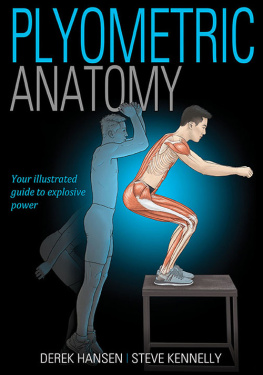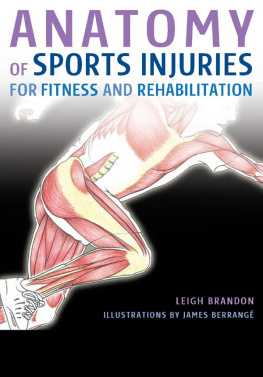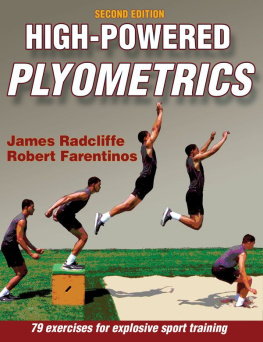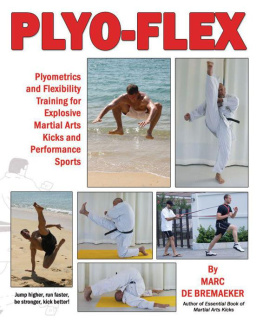Hansen Derek - Plyometric Anatomy
Here you can read online Hansen Derek - Plyometric Anatomy full text of the book (entire story) in english for free. Download pdf and epub, get meaning, cover and reviews about this ebook. City: Champaign;IL, year: 2017, publisher: Human Kinetics, genre: Children. Description of the work, (preface) as well as reviews are available. Best literature library LitArk.com created for fans of good reading and offers a wide selection of genres:
Romance novel
Science fiction
Adventure
Detective
Science
History
Home and family
Prose
Art
Politics
Computer
Non-fiction
Religion
Business
Children
Humor
Choose a favorite category and find really read worthwhile books. Enjoy immersion in the world of imagination, feel the emotions of the characters or learn something new for yourself, make an fascinating discovery.
- Book:Plyometric Anatomy
- Author:
- Publisher:Human Kinetics
- Genre:
- Year:2017
- City:Champaign;IL
- Rating:4 / 5
- Favourites:Add to favourites
- Your mark:
- 80
- 1
- 2
- 3
- 4
- 5
Plyometric Anatomy: summary, description and annotation
We offer to read an annotation, description, summary or preface (depends on what the author of the book "Plyometric Anatomy" wrote himself). If you haven't found the necessary information about the book — write in the comments, we will try to find it.
Plyometric Anatomy — read online for free the complete book (whole text) full work
Below is the text of the book, divided by pages. System saving the place of the last page read, allows you to conveniently read the book "Plyometric Anatomy" online for free, without having to search again every time where you left off. Put a bookmark, and you can go to the page where you finished reading at any time.
Font size:
Interval:
Bookmark:

Library of Congress Cataloging-in-Publication Data
Names: Hansen, Derek, 1969- author. | Kennelly, Steve, author.
Title: Plyometric anatomy / Derek Hansen, Steve Kennelly.
Description: Champaign, IL : Human Kinetics, [2017] | Includes
bibliographical references and index.
Identifiers: LCCN 2017011257 (print) | LCCN 2017008863 (ebook) | ISBN
9781492533498 (print) | ISBN 9781492535591 (ebook)
Subjects: LCSH: Physical fitness--Health aspects. | Exercise--Physiological
aspects.
Classification: LCC RA781 .H343 2017 (ebook) | LCC RA781 (print) | DDC
613.7--dc23
LC record available at https://lccn.loc.gov/2017011257
ISBN: 978-1-4925-3349-8 (print)
Copyright 2017 by Derek Hansen and Steve Kennelly
All rights reserved. Except for use in a review, the reproduction or utilization of this work in any form or by any electronic, mechanical, or other means, now known or hereafter invented, including xerography, photocopying, and recording, and in any information storage and retrieval system, is forbidden without the written permission of the publisher.
This publication is written and published to provide accurate and authoritative information relevant to the subject matter presented. It is published and sold with the understanding that the author and publisher are not engaged in rendering legal, medical, or other professional services by reason of their authorship or publication of this work. If medical or other expert assistance is required, the services of a competent professional person should be sought.
Acquisitions Editor: Jeff Mathis
Senior Developmental Editor: Cynthia McEntire
Managing Editor: Caitlin Husted
Copyeditor: Jan Feeney
Permissions Manager: Martha Gullo
Graphic Designers: Keri Evans and Denise Lowry
Cover Designer: Keri Evans
Visual Production Assistant: Joyce Brumfield
Senior Art Manager: Kelly Hendren
Cover and Interior Illustrations: Human Kinetics
Printer: Versa Press
We thank Simon Fraser University in Burnaby, British Columbia, Canada, for assistance in providing the location for the photo shoot for this book.
Human Kinetics books are available at special discounts for bulk purchase. Special editions or book excerpts can also be created to specification. For details, contact the Special Sales Manager at Human Kinetics.
Printed in the United States of America
10 9 8 7 6 5 4 3 2 1
The paper in this book is certified under a sustainable forestry program.
Human Kinetics
Website: www.HumanKinetics.com
United States: Human Kinetics
P.O. Box 5076
Champaign, IL 61825-5076
800-747-4457
e-mail: info@hkusa.com
Canada: Human Kinetics
475 Devonshire Road Unit 100
Windsor, ON N8Y 2L5
800-465-7301 (in Canada only)
e-mail: info@hkcanada.com
Europe: Human Kinetics
107 Bradford Road
Stanningley
Leeds LS28 6AT, United Kingdom
+44 (0) 113 255 5665
e-mail: hk@hkeurope.com
For information about Human Kinetics coverage in other areas of the world, please visit our website: www.HumanKinetics.com
E6832
To my unconditionally loving family for their endless support and patience. My wife, Carolyn, and my children, Callum, Bridgette, and Hannah, have always been there for me and provide me with the motivation to find better ways of helping people. I also want to thank my parents, Clarence and Carole, for urging me to follow my passions and always put forward my best effort. Finally, I would not be in a position to share my knowledge without the guidance of my mentors, including Al Vermeil, Rob Panariello, Donald Chu, Al Miller, Joseph Horrigan, and Charlie Francis.
Derek Hansen
To my wife Rita, and our children Ryan, Lia, and Mary. Thanks for your never ending love and support and for creating balance in our lives.
Steve Kennelly
The current emphasis on sport science and technology in all areas of human performance has encouraged athletes, coaches, and sport medicine professionals to seek out the most effective ways to train and closely monitor athletic improvement daily. Athletes not only desire to be consistently faster, stronger, and more powerful but also more resistant to injury. Staying resilient and healthy is as important to athletes as performing at a high level, because missed training sessions and competitions only make it more difficult to progress and maintain a high level of output. Thus, you need to take special care when selecting, arranging, and integrating training elements to elicit the desired responses and adaptations. Improving performance is not so much about finding the magic bullet of training but rather about developing a comprehensive approach composed of precise exercises dispensed at the most appropriate times of the training program.
Some of the most effective exercises for improving strength, power, and speed involve little to no equipment. While the sport training and fitness industries are inundated with all types of resistance training machines and speed training devices, the combination of gravity and the human body is all that is required. Over half a century ago, coaches and sport scientists developed an approach to training that took advantage of a system of explosive athletic movements to improve the force production qualities of the human body. This system of training is now commonly referred to as plyometrics. The term plyometricsoriginally coined by U.S. runner and coach Fred Wilt in 1975is derived from the Greek prefix plio meaning more or longer and the suffix metric meaning to measure. While the literal translation of the word plyometric does not provide much information about the details of the system, it does imply a precise anatomical approach to exercise.
In its truest form, a plyometric exercise makes use of the bodys natural response to the rapid lengthening of muscle. This response has also been referred to as the stretch-shortening cycle or myotatic reflex. Research has shown that a muscle stretched rapidly before a contraction will contract and shorten more forcefully and rapidly, creating positive adaptations for strength, power, and speed (Komi 1984; De Villarreal, Requena, and Newton 2010). For example, a basketball player preparing to grab a rebound will gather and lower his center of gravity before forcefully jumping up and securing the ball (figure 1). Similarly, a volleyball player will drop rapidly into a deep knee bend before jumping up to block an opposing players spike attempt. It is a natural human response to load up or gather before an explosive movement. In golf, a back swing actively stretches the key muscles required for the powerful, high-velocity forward movement of the club. A baseball pitcher will wind up before delivering a high-speed pitch over home plate. You witness the benefits of plyometric activity in every sporting event. In some cases, athletes learn to resist resorting to using the stretch-shortening cycle in order to save time, as in starting from blocks in both track sprinting and swimming competitions. In boxing and other combative sports, loading up for a punch can give the opponent time to prepare for an assault.
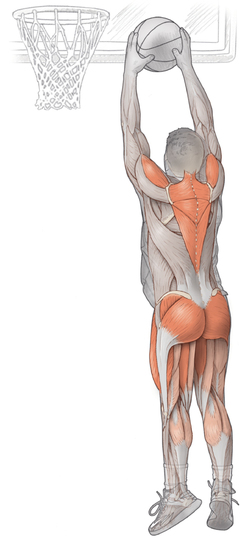
Font size:
Interval:
Bookmark:
Similar books «Plyometric Anatomy»
Look at similar books to Plyometric Anatomy. We have selected literature similar in name and meaning in the hope of providing readers with more options to find new, interesting, not yet read works.
Discussion, reviews of the book Plyometric Anatomy and just readers' own opinions. Leave your comments, write what you think about the work, its meaning or the main characters. Specify what exactly you liked and what you didn't like, and why you think so.

